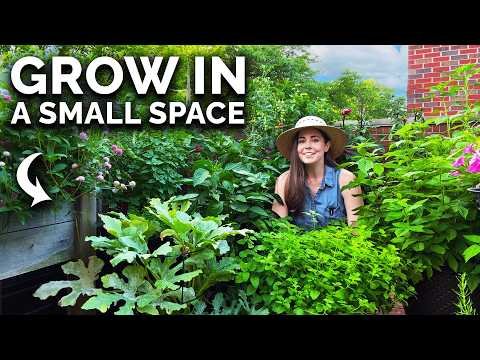The adventure of balcony gardening begins with a single plant. Whether you have plans to fill the space with flowers and veggies or add a few accents, small sites offer big opportunities.
Balcony gardening presents a few challenges that differ from in-ground gardens. But it has great benefits, too. It allows us to regulate soil quality, control moisture, and design the arrangement in detail. Small spaces yield a bounty of vegetables and cut flowers, showcase tropicals, and attract pollinators—all with little to no weeding.
Here, we’ll review how to begin a balcony garden from scratch. These straightforward tips set the foundation for a beautiful and productive rooftop or balcony garden.
Balcony Gardening Overview
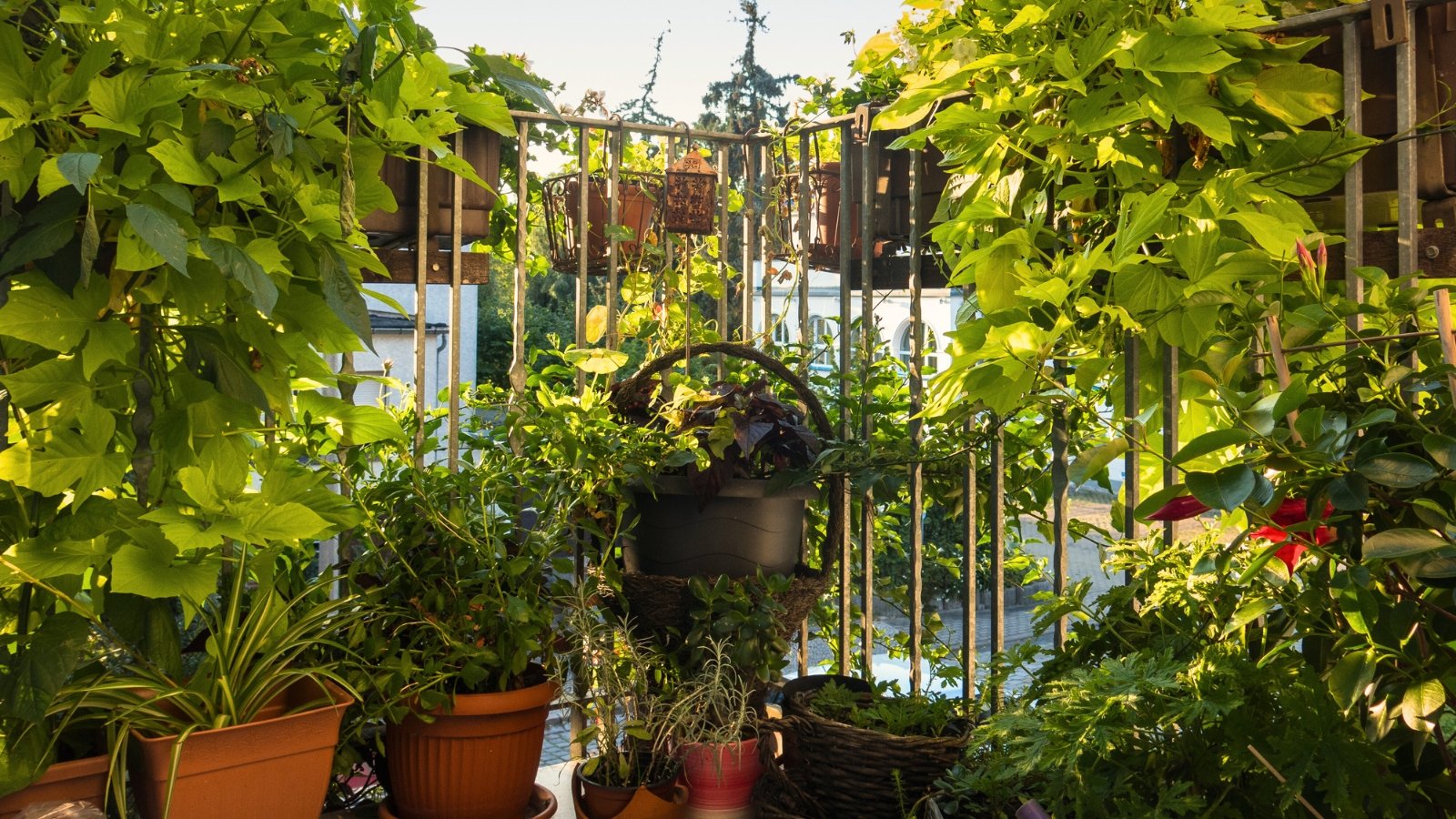
Whether you’re a beginner or experienced gardener, a balcony, rooftop, or deck is a blank slate for exciting growing opportunities. Not only will it improve your view from the inside, but it will also bring a connection to nature, add biodiversity, and yield a bounty of blooms or food crops.
The sky’s the limit (mostly) regarding what to grow in these spaces. Essential factors to consider as you get started are temperature, light exposure, wind conditions, access to water, and how to get the most growing room out of a small area.
Thousands of different crops and flowers can grow in pots, but you must choose species that match the site’s specific conditions. It’s tempting to try to make plants adapt to conditions outside their natural preferences—we all do it—but the best investments are those that meet the site’s sunlight and temperature exposures.
Know your area’s USDA growing zone if you want to grow perennials, trees, or shrubs that overwinter. The hardiness zone will let you know if the species can survive in your region’s lowest winter temperatures. For containers, it’s a good idea to choose species that survive one to two zones lower (colder). Container-grown plants lack the natural insulation that comes from surrounding ground soil, so they’re more susceptible to freezing conditions.
Other plants, like annual vegetables and ornamentals, grow in a single cycle. They naturally decline when temperatures extend outside of their growing range. Plan to move sensitive herbs and tropicals inside for the winter if the exterior conditions become too cold and you want to preserve them.
You’ll also want to check the weight-bearing capacity of your balcony. If you’re planning an extensive arrangement with raised beds and multiple large pots or want to add more to the collection, know the weight limit to avoid overloading the structure. Add container weight filled with soil and plant material.
Observe the Site
Observing site conditions leads to the best setup and plant selection. Assess how sunlight moves through your space. Note wind conditions and the windiest spots on the balcony. Consider weighty containers, durable plants, or a screen if your area is prone to wind.
Sun Exposure
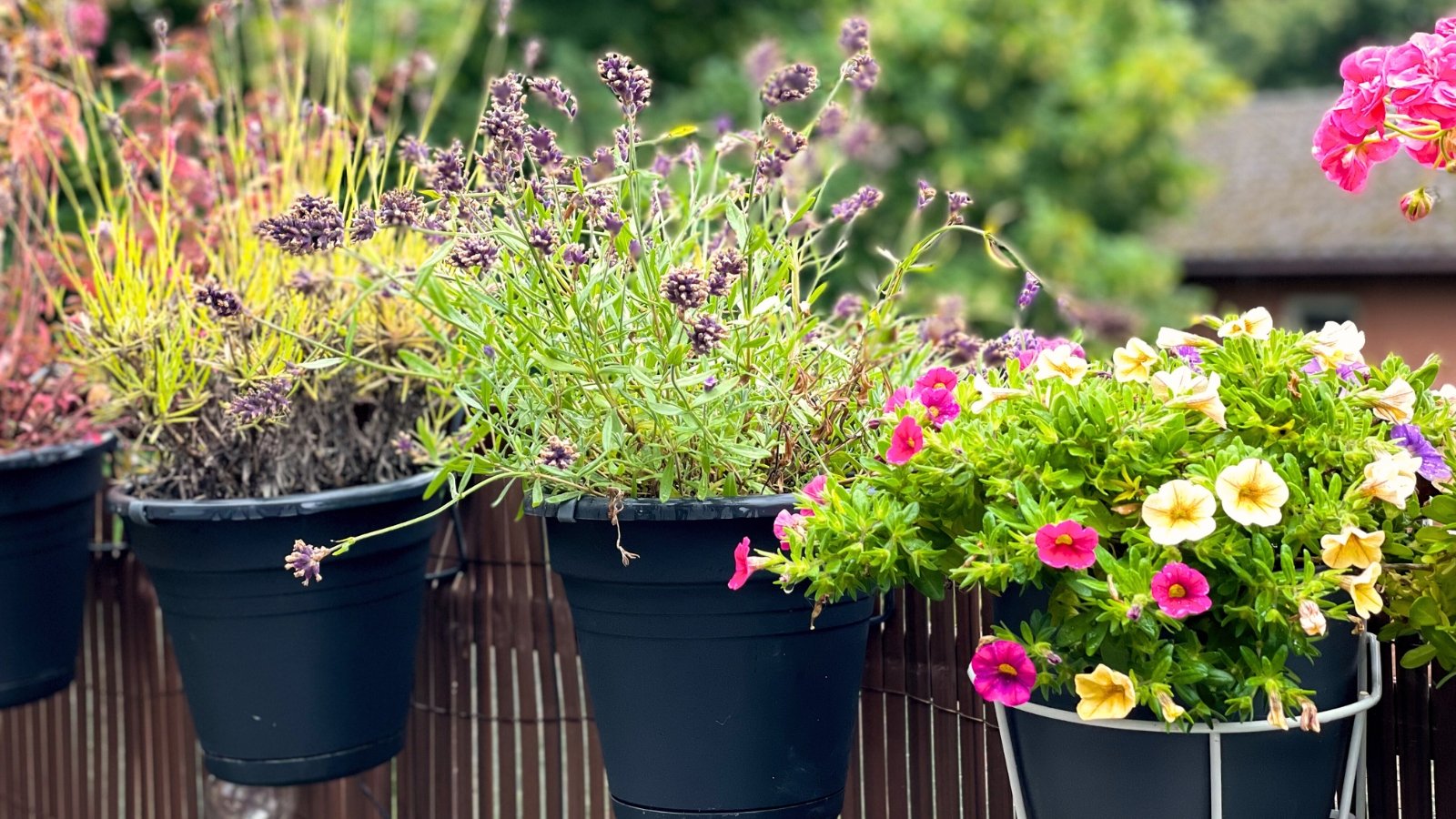
Sunlight is the most important factor in determining what grows well in a certain area. Choose varieties that fit the amount of sun that your deck or balcony receives.
- Full-sun plants need six or more hours of sunlight per day.
- Full-shade growers need less than two hours of sun.
- Partial shade is in between at around four hours.
Observe your space at different times of day to account for direct sun and shaded zones. Walls can shadow areas as the sun moves throughout the day.
South or west-facing balconies provide the best exposure for fruiting and flowering plants. They need to handle intense afternoon sun. East or north-facing situations receive less sun and are better for leafy plants and partial shade selections.
Container Selection
With no soil or ground to plant in, containers become the foundational start of the garden. Consider a range of sizes, from raised beds and elevated planters to grow bags and terracotta pots.
Size
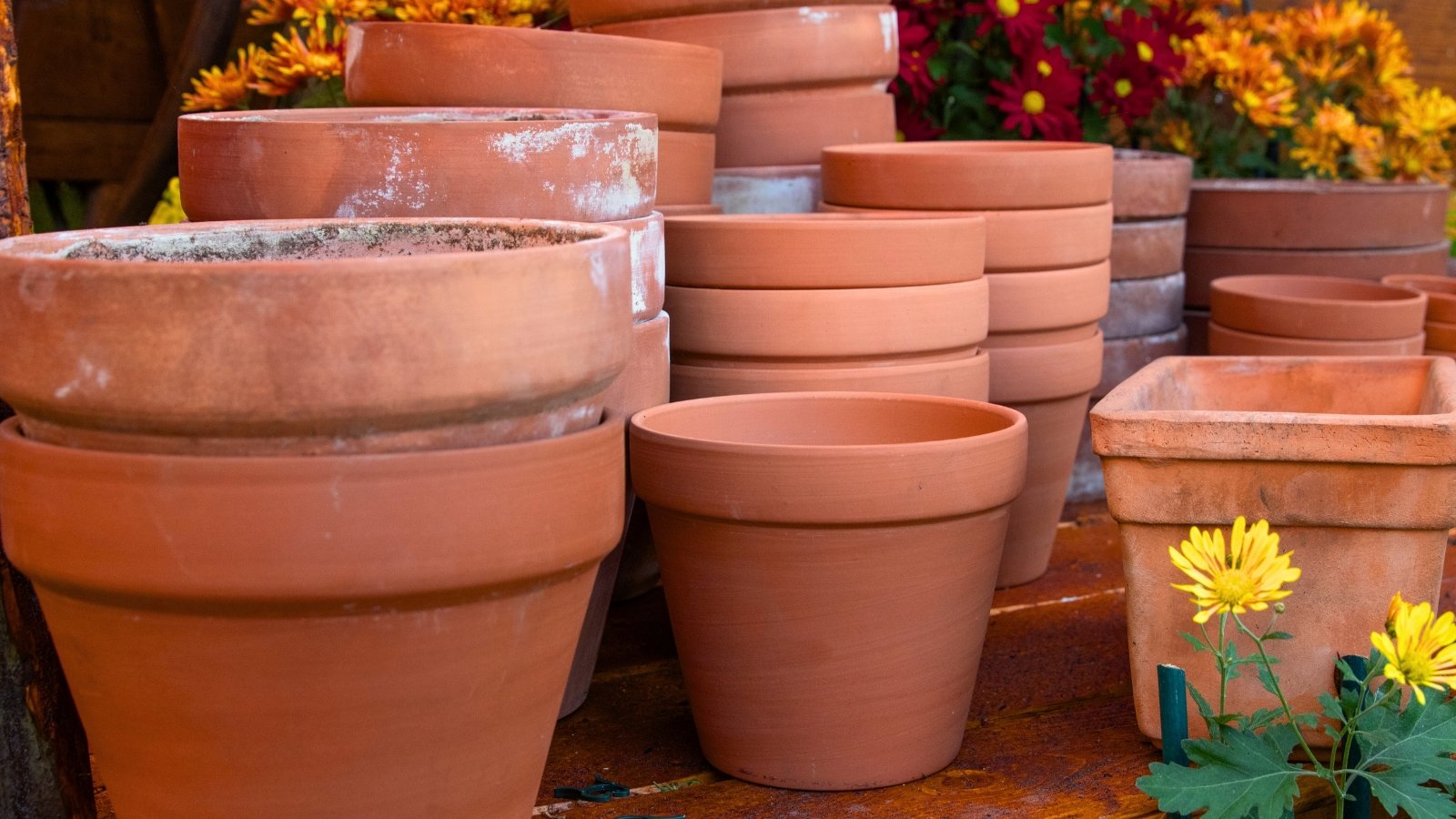
Containers dry out faster than in-ground plantings, and each pot has pros and cons. Small pots dry out more quickly than larger ones, but they’re also more portable and easy to arrange. Small containers require more frequent watering and feeding than larger ones, making large ones convenient since they hold moisture longer.
A seven-to-ten-gallon container is a good rule of thumb for many edible crops. An 18-inch diameter or more is ideal for large vegetables and fruits like tomatoes or blueberry bushes. Smaller crops like strawberries, cilantro, or lettuce can grow in rail planters or vertical Greenstalk Planters. Size is variable for each plant—allow plenty of room to accommodate mature roots, and opt for larger containers for mixed combinations.
Material
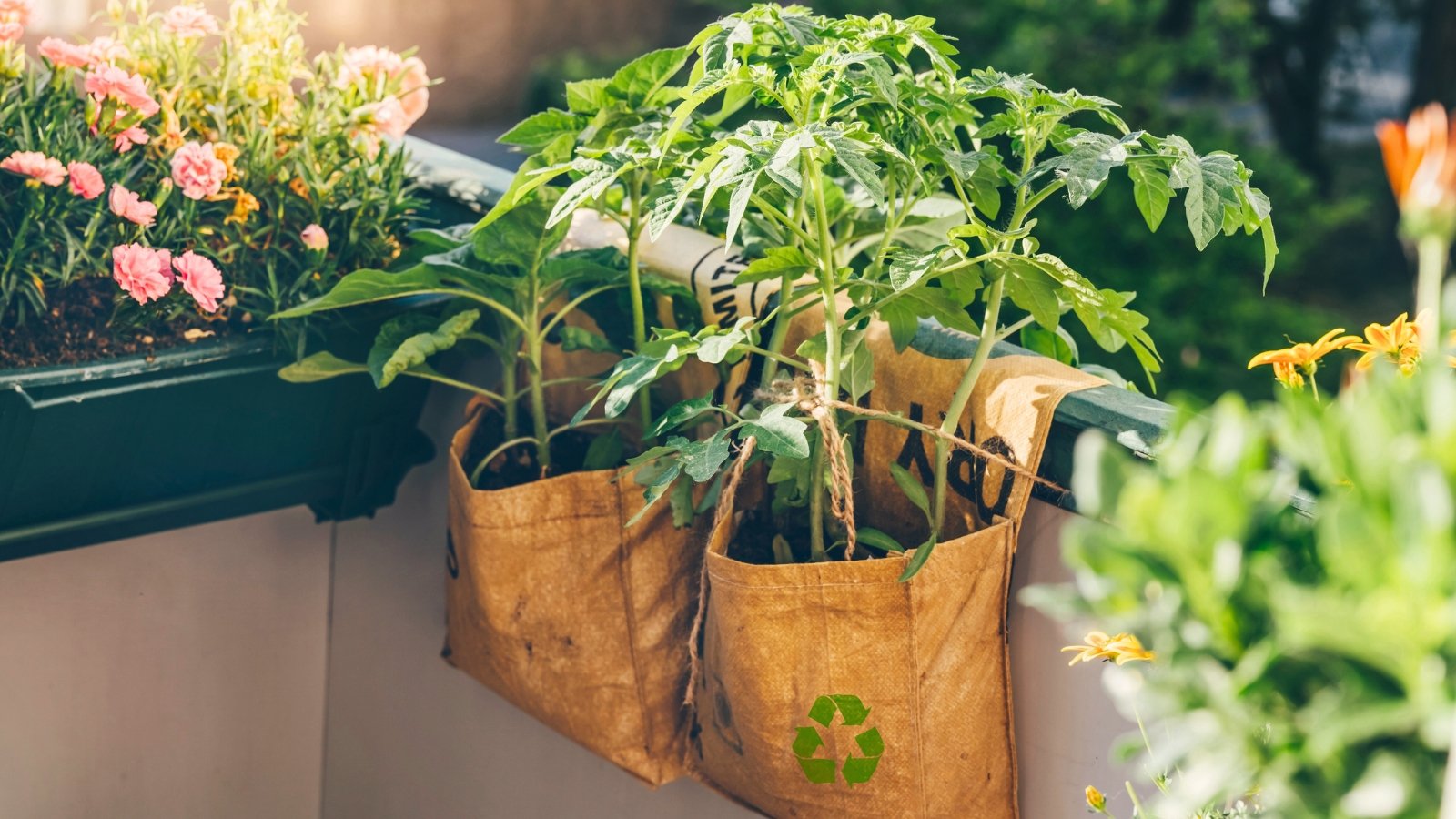
Beginners sometimes forget about the weight of a pot filled with soil and roots. Container material affects drainage, weight, aesthetics, and the bottom line. Budget-friendly options exist to grow a range of sizes.
All containers need good drainage to allow water to run freely out of the bottom of the pot. Terra cotta and porous materials drain more quickly, which is a plus for roots. They also dry out more quickly, require more frequent watering, and are prone to cracking in freezing temperatures.
Large pots are ideal for root growth, are stable in balcony spots, and retain moisture. However, they may be more expensive and cumbersome.
For a lightweight and flexible alternative, add grow bags to the mix. Grow bags are fabric containers that hold soil and work like any rigid vessel. Lined grow bags are more durable and insulate and hold moisture longer than unlined bags. They are long-lasting, portable, store easily, and allow airflow around roots along with fast drainage. They’re also an efficient growing method and the most lightweight.
Raised beds are excellent options for beginner balcony gardens with a bit more space. Available in a range of sizes and configurations, they provide soil volume to house multiple plants with plenty of space for root growth. They’re easy to install in place. Look for galvanized metal beds coated with food-safe materials for healthy growth and durability. Cedar raised beds are natural, untreated options lasting ten years or more.
Maximize Space
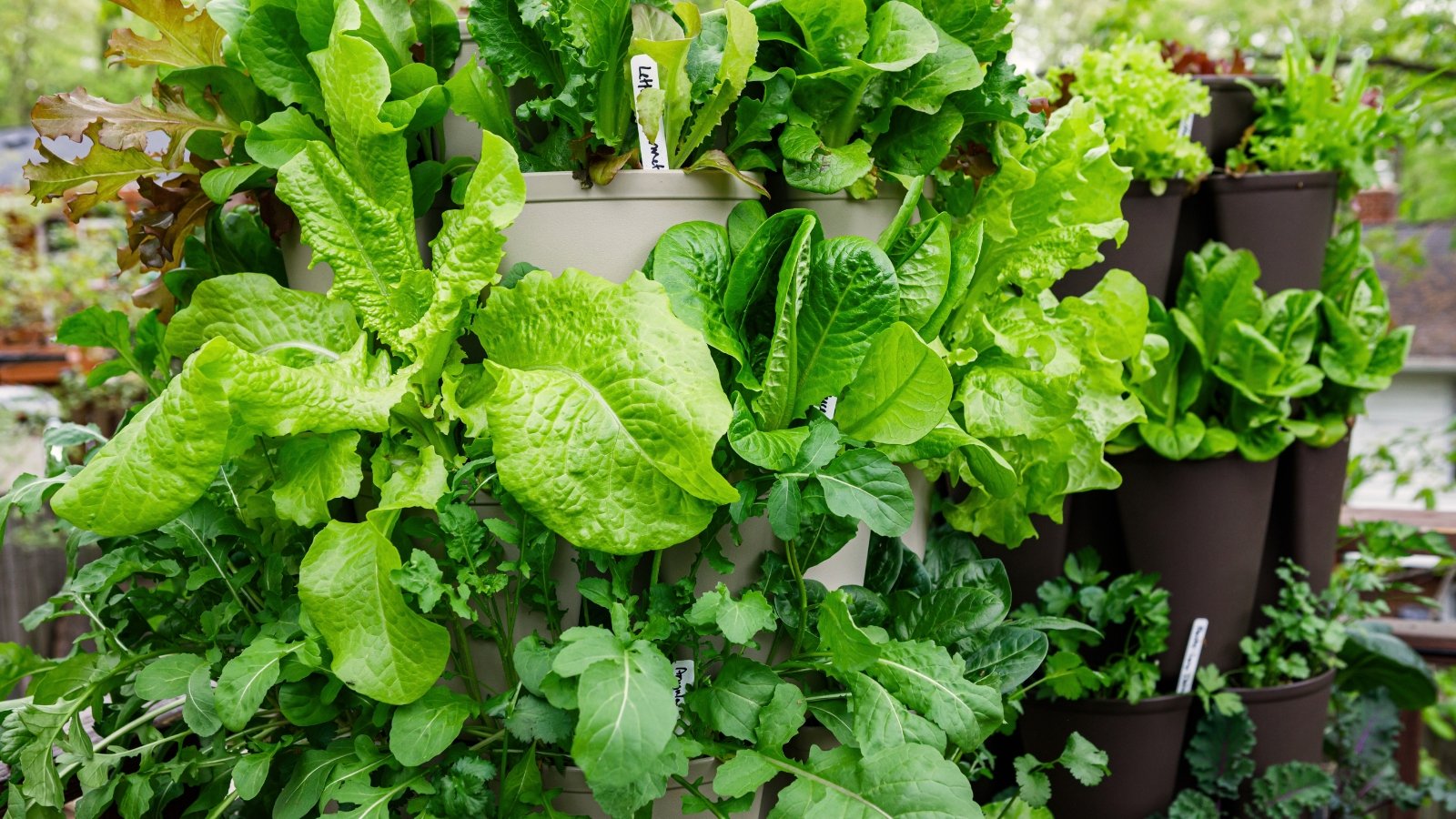
Vertical planting maximizes available space in small areas. Gardening upright on support structures helps beginner growers take advantage of height while minimizing spread on your balcony. This can also make it easier to tend your crops.
Go vertical with trellises, arches, streamlined planting structures, and staking. Wall-mounted plants and hanging baskets work well, too.
Greenstalk Planters are versatile structures with stacked planting pockets for easy growth and harvesting. The columnar pockets and water reservoir streamline planting, growing, maintenance, and space. While space-saving, it doesn’t limit growth potential, and many plants grow well in various configurations.
Whether growing in upright columns or along arches and trellises, vertical plants add interest and dimension to the layout. Vertical growing promotes:
From small sites like balconies, courtyards, and patios to raised beds and containers, upright structures fit in various spaces.
Lifting leaves and stems off the ground improves air circulation. Improving airflow with less crowded and damp conditions helps keep fungal problems like powdery mildew at bay. Less irrigation splashing on leaves and a faster dry time make fungal conditions less optimal.
Upright supports expand the ability to grow climbing vines and sprawling crops in small areas.
Lifting plants increases light exposure for all-around even growth.
Growing Medium
Soil quality is as important as access to sunlight and water. The growing medium provides essential nutrients and significantly affects overall garden health. Balcony and rooftop gardens are beginner-friendly because you don’t have to worry about the native soil. Containers and raised beds allow us to control soil quality by choosing a pre-made mix.
Potting Mix
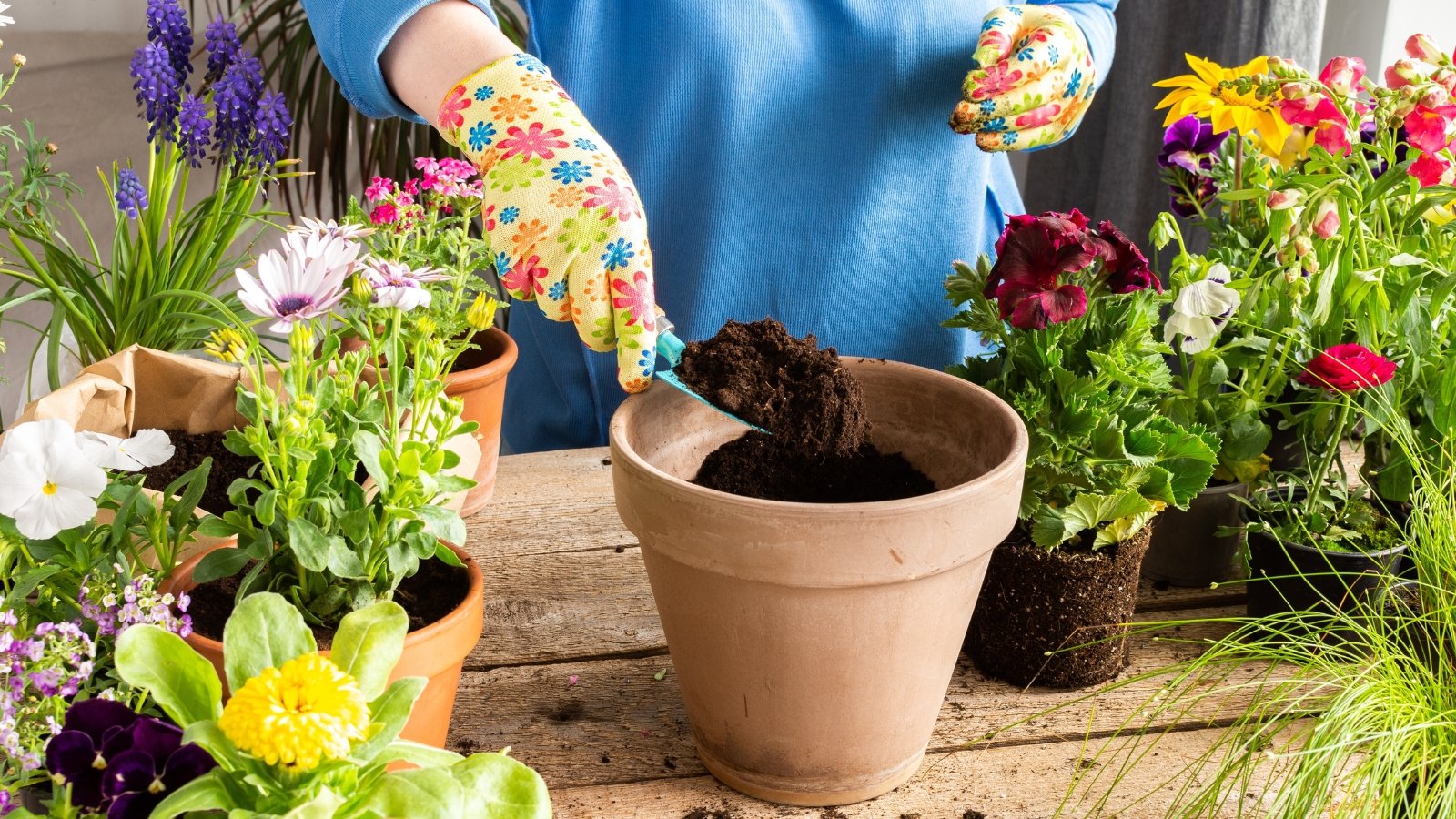
It’s handy to use a high-quality bagged potting mix for filling containers. These blends are formulated specifically for contained growing. Pre-packaged potting mixes are sterile, contain nutrients to foster growth, and have moisture-retaining properties in combination with good drainage.
Avoid “garden soil,” which are mixes tailored for in-ground plantings. The potting mix is airy and less compact, allowing roots to breathe under less density.
Compost
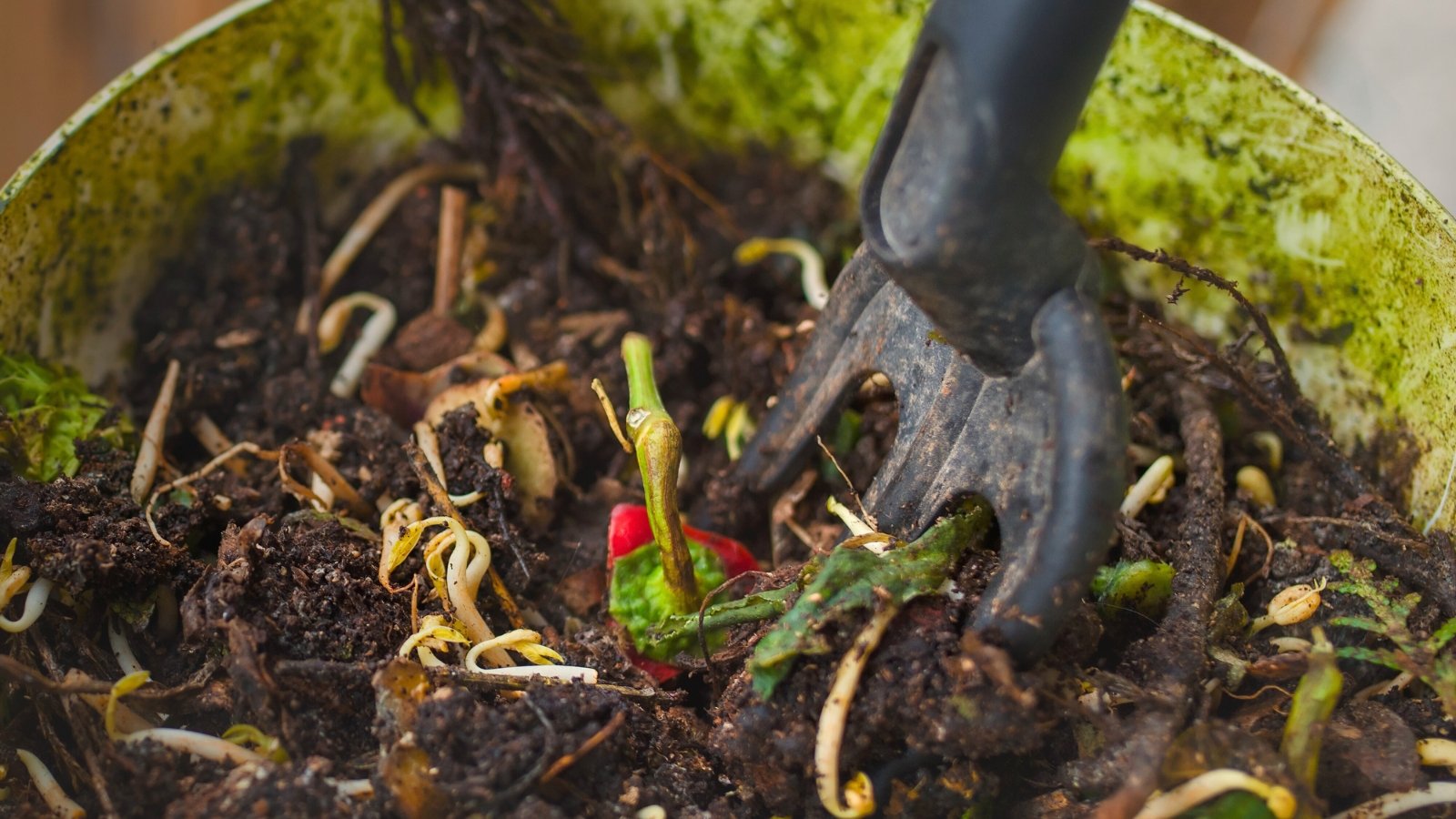
Amend and top-dress pots with compost for added nutrition. Instead of completely emptying grow bags, pots, and raised beds after each growing season, infill them with compost for continual enrichment.
As you progress in the garden and learn what works in your containers, you can build your own soil mixes and make your own compost.
Plant Selection
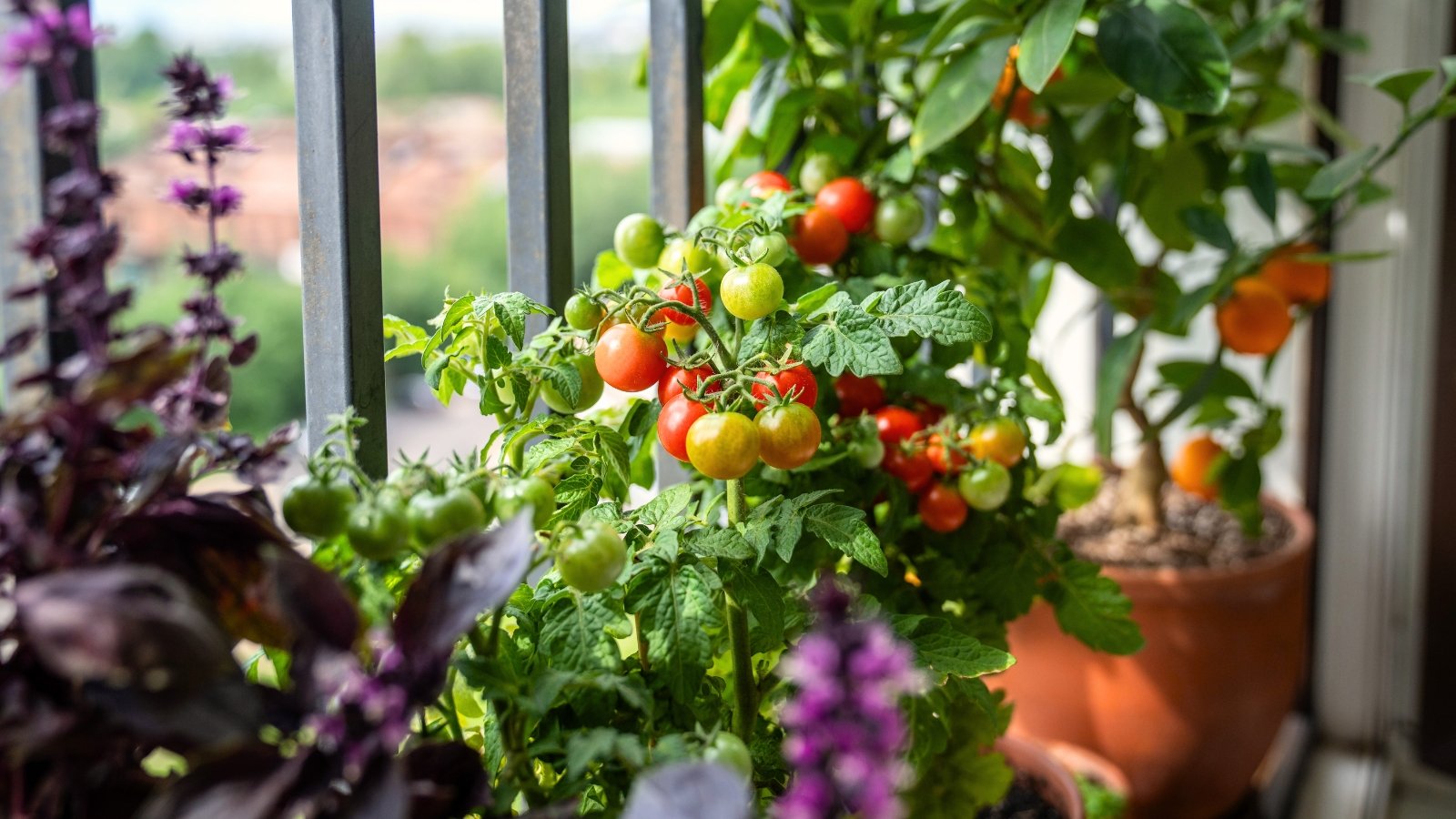
Now for the fun part—choosing veggies, fruits, herbs, and flowers! With the right sun exposure, container size, and potting mix, we’re ready to grow.
Look for dwarf or compact growers to save space and flourish in container culture. Smaller cultivars often grow vigorously with faster flowering and fruiting. From flowering annuals and perennials to tomatoes, apples, and peaches, innovations in patio cultivars are well-suited to rooftop displays. Local nurseries and online sources highlight compact selections optimal for containers.
The balcony doesn’t limit us to dwarf plants. A tall, narrow grower like an indeterminate tomato or vining sugar snap pea doesn’t occupy much space because it grows vertically. Employ trellises and arches to lift plants off the ground.
Be selective with what you choose for the limited real estate. Curate your collection by focusing on what you love. Grow multiples of your favorites rather than a vast cross-section to optimize the harvest and enjoyment. The gardening journey is all about learning and trial and error in the best of ways.
Watering
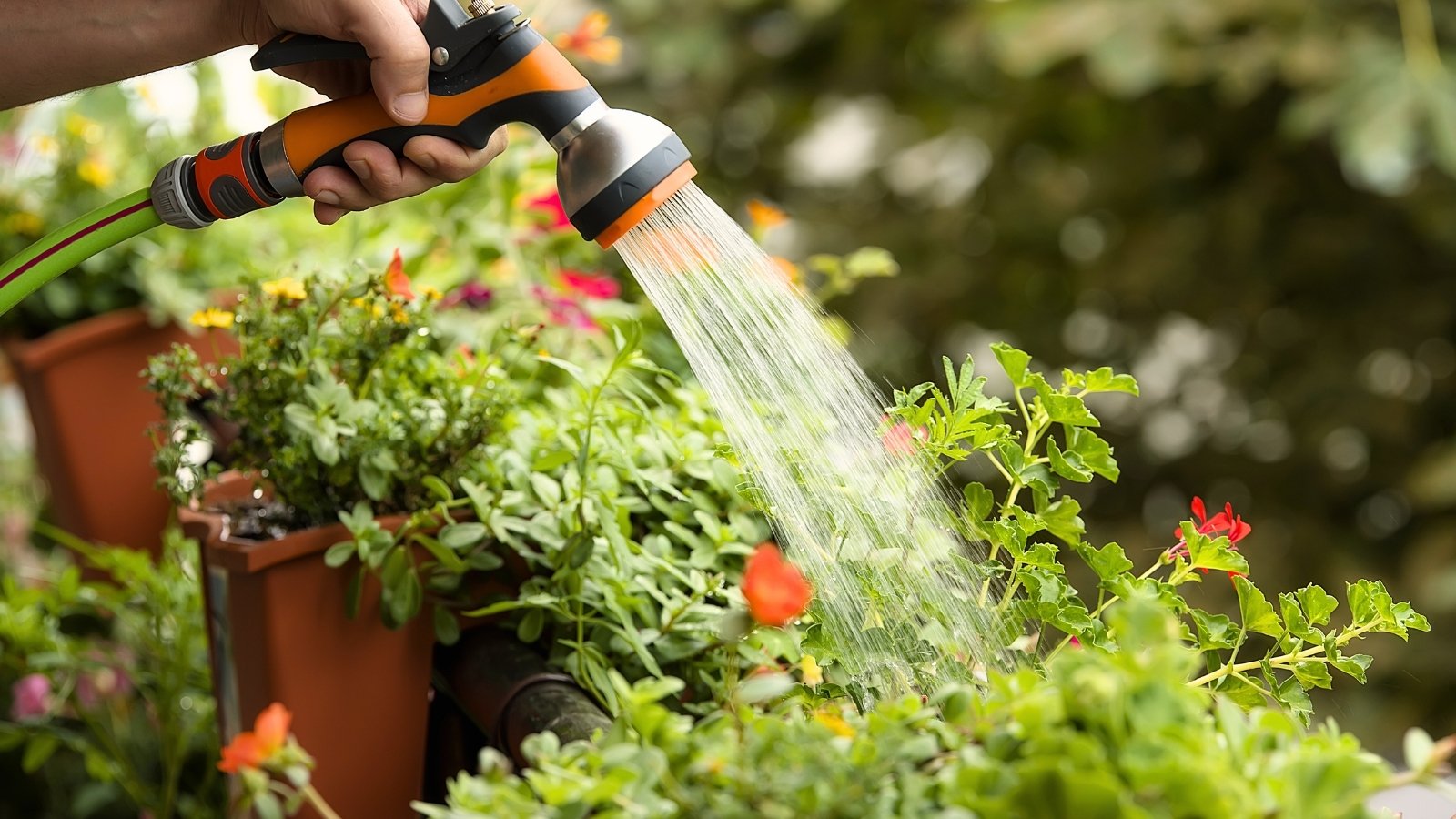
Easy access to water is essential for container gardeners. Hand watering with cans and hose wands works well as a primary method or supplement to irrigation systems. Installing simple irrigation saves time and water. It also makes it easy to schedule and manage water delivery to each plant.
If your space has a hose connection, install a timer and drip system between pots. You can easily adjust how often and for how long water runs. Drip systems deliver water consistently at low volumes with little runoff. Supplemental hand watering becomes useful for those not on the system or needing additional spot watering.
How often to water depends on:
- Specific plant needs
- Sun exposure
- Container size and type
Warmer days require more regular water. Adjust and reduce water sessions as temperatures cool. To check soil moisture, do a touch test. If it’s dry to a couple of inches below the surface, it’s time to water. If not, hold off a bit.
Watering needs and understanding of particular plants and containers come quickly with experience. At each session, water deeply until it flows out of the plant’s base. Avoid splashing leaves when possible.
Fertilizing
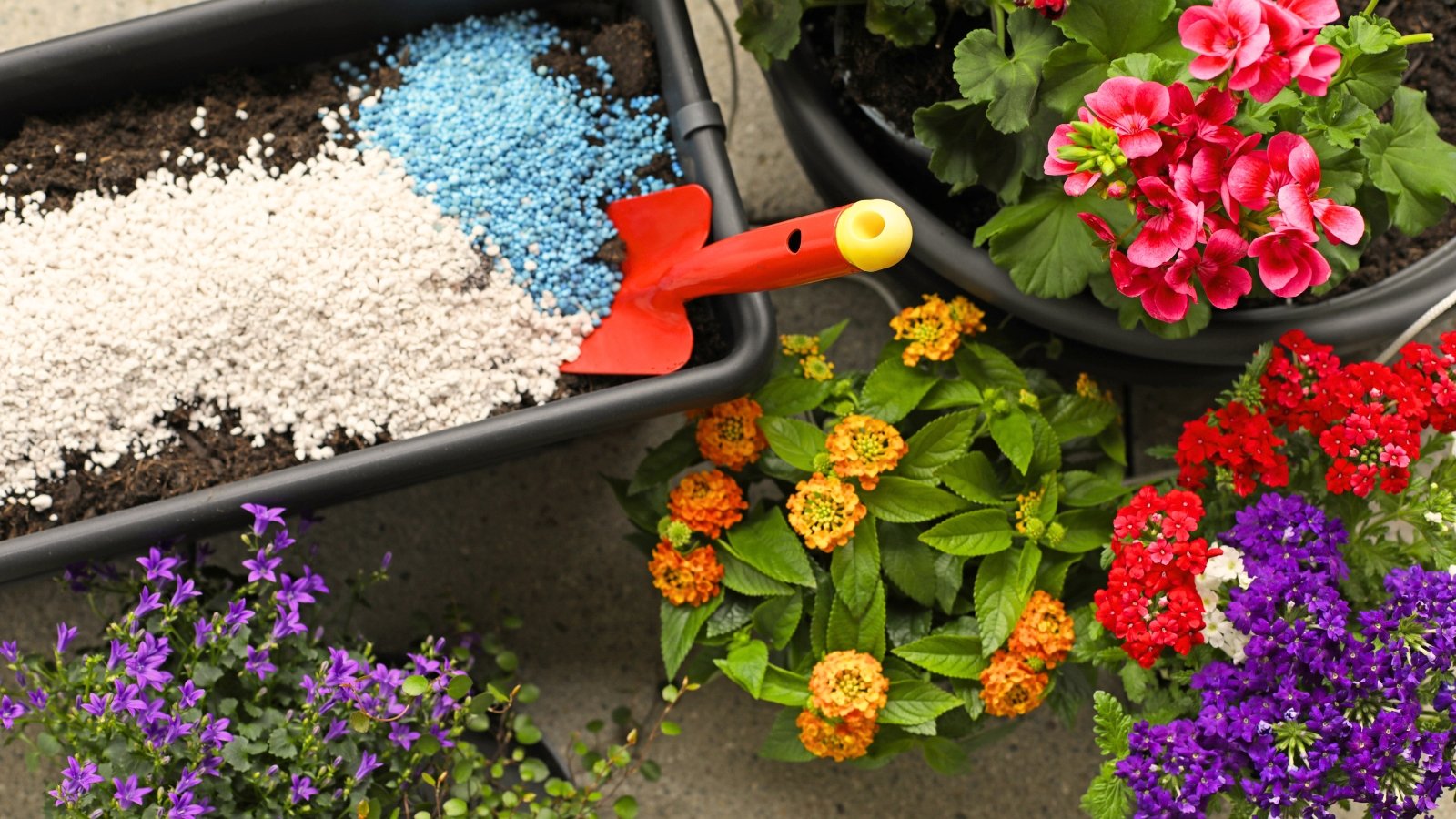
Balcony gardens need feeding more frequently than in-ground plantings, but it is a common beginner-mistake to underfertilize. Nutrients leach faster with regular water and draining.
Apply granular fertilizer at planting. Granular and slow-release selections take longer to break down, releasing nutrients gradually. Supplement with a liquid feed like seaweed extract throughout the growing season. Start with an all-purpose organic selection to eliminate the guesswork.
As you grow and want to tailor fertilizing, opt for a balanced fertilizer at planting, where nitrogen (N) promotes leafy growth. Switch to higher phosphorus (P) and lower nitrogen blends as plants begin to flower and fruit. Phosphorus promotes blooming.
Plan to fertilize every two weeks or so during the growing season. Reapply liquid feed after heavy rains, which dilute the nutrients as the soil drains.
Ease of Maintenance
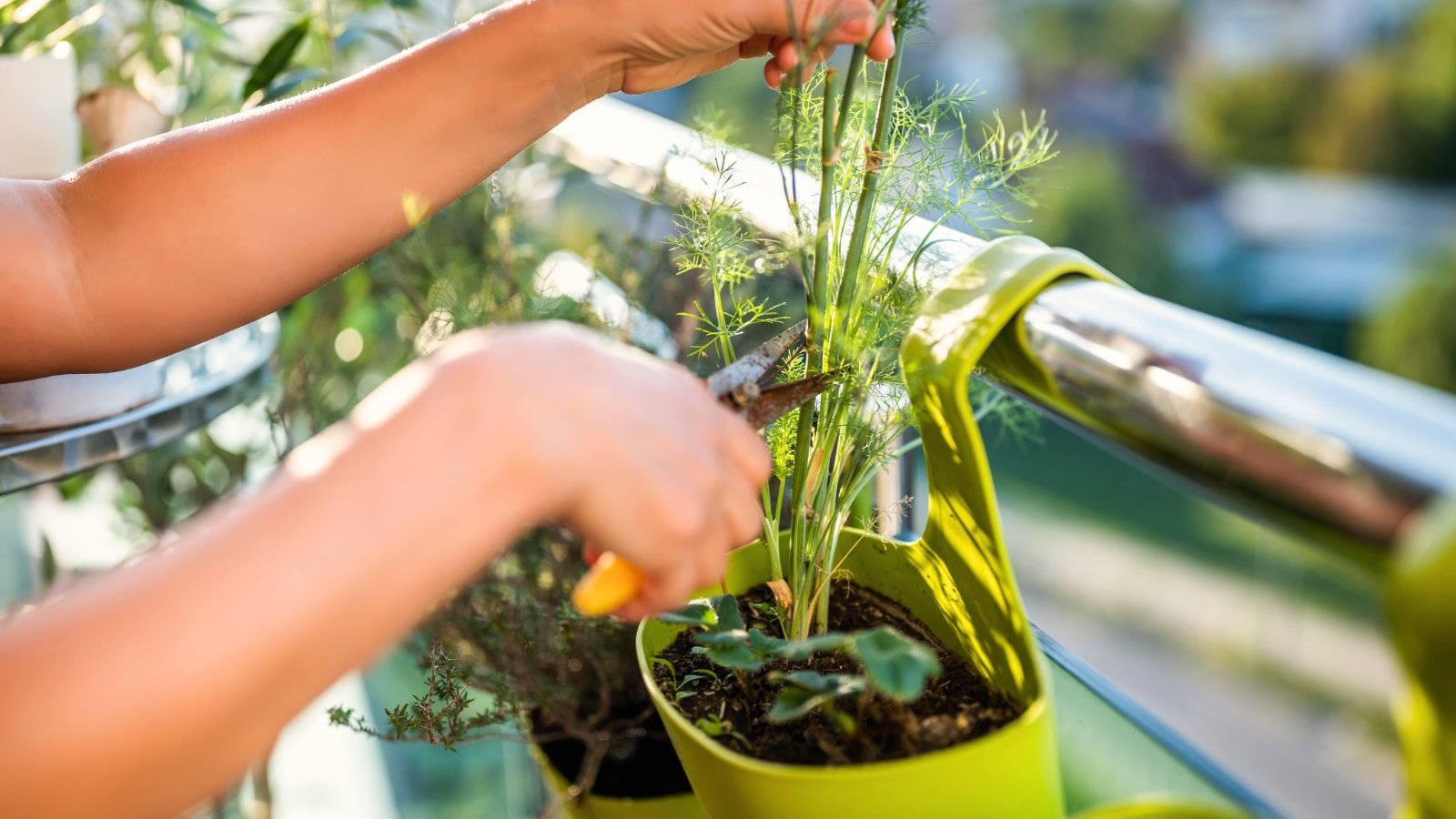
The beauty of balconies, rooftops, patios, and small spaces is their accessibility. They make it easy to harvest and tend plants, from pruning to picking fruits to cutting flowers.
Consider maintenance and everyday tasks when making your arrangements. Plan for garden clippings, material storage, and hauling supplies (like pots and bags of soil) in and out of your garden. Use effort-saving measures like wheeled platforms to make it easy to move large plants or vertical planters around.
Mostly, decide what to do with all your extra veggies and flowers. Even though balcony gardens are small and beginner-friendly, they still yield in great abundance. Enjoy the bounty of elevated gardening and don’t forget to share some with the people you love.
